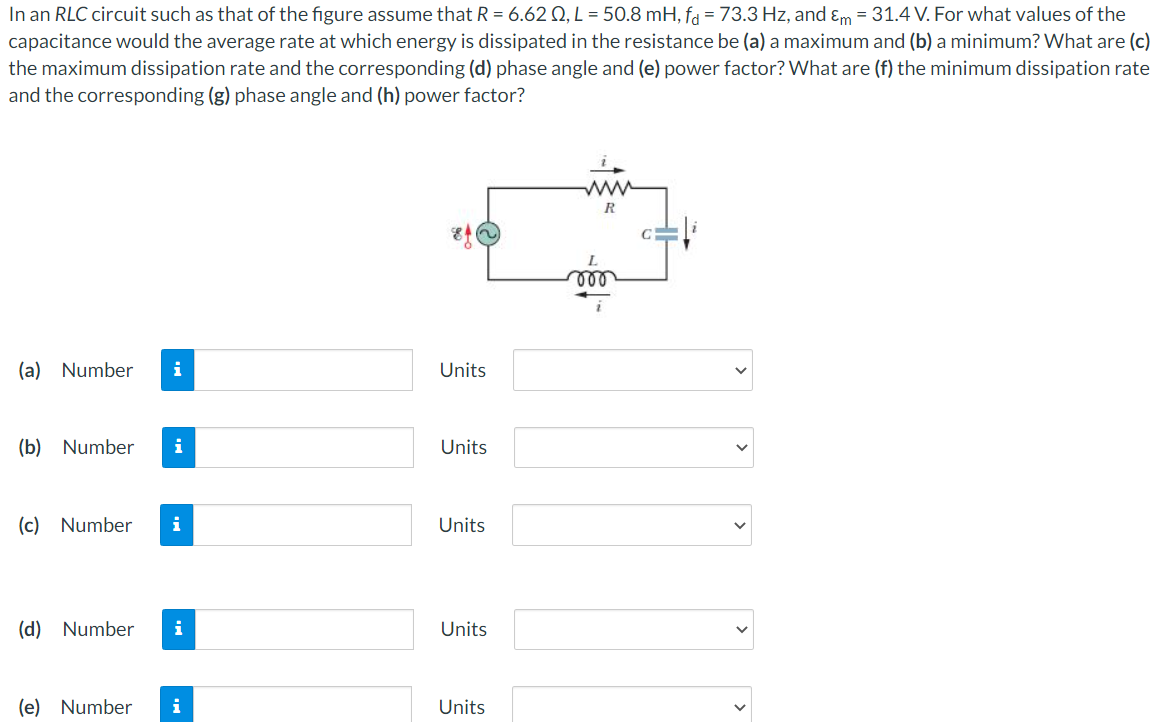In an RLC circuit such as that of the figure assume that R = 6.62 Ω, L = 50.8 mH, fd = 73.3 Hz, and εm = 31.4 V. For what values of the capacitance would the average rate at which energy is dissipated in the resistance be (a) a maximum and (b) a minimum? What are (c) the maximum dissipation rate and the corresponding (d) phase angle and (e) power factor? What are (f) the minimum dissipation rate and the corresponding (g) phase angle and (h) power factor? (a) Number Units (b) Number Units (c) Number Units (d) Number Units (e) Number Units
